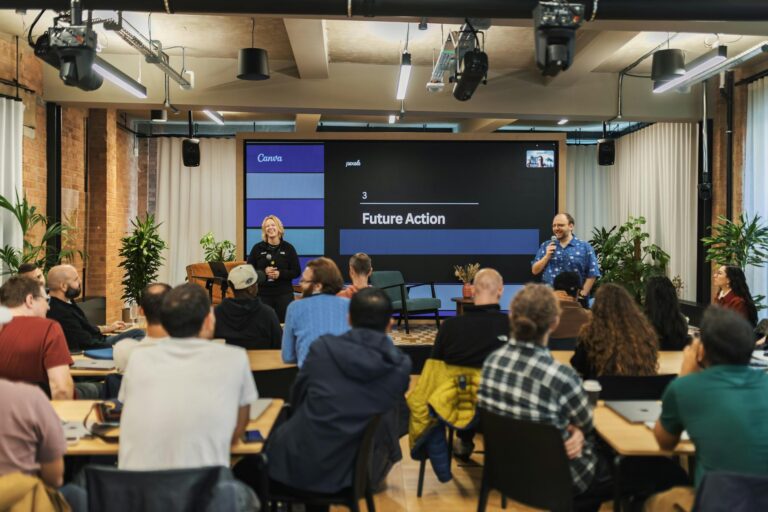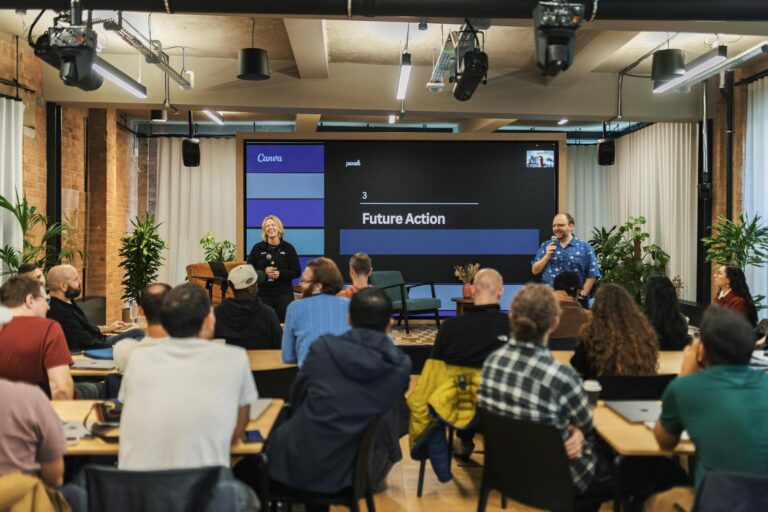React Performance Tips and the 2025 Business Tech Playbook
Mastering the Digital Frontier: Essential React Performance Tips and the 2025 Tech Playbook for Business Growth
Estimated reading time: 10-11 minutes
Key Takeaways
- Prioritize performance in web and mobile applications using techniques like React performance tips, Next.js for speed, and lightweight WordPress plugins to enhance user experience and engagement.
- Strategically select mobile development frameworks (Flutter or React Native) based on team expertise and project requirements to ensure cross-platform efficiency and rapid app deployment.
- Embrace cloud agility through serverless architectures on platforms like AWS to significantly reduce operational costs, boost scalability, and free up resources for innovation.
- Automate development and deployment processes with CI/CD pipelines, utilizing tools like GitHub Actions, to maintain consistent code quality, accelerate delivery cycles, and minimize human error.
- Thoughtfully integrate AI as a strategic partner to automate workflows, glean critical insights, and enhance every facet of your business operations, building upon an optimized technical foundation.
Table of Contents
- The Modern Web: Speed, Accessibility, and the Power of Next.js
- Mobile Innovation: Crafting Experiences That Connect
- Cloud & DevOps: Scaling with Agility and Efficiency
- The AI Automation Advantage for Business Efficiency
- Practical Takeaways for Your Business
- Partnering for Success: How AI TechScope Can Help
- Ready to Transform Your Business with AI?
- FAQ
In the rapidly evolving digital landscape of 2025, business success hinges on speed, efficiency, and adaptability. From lightning-fast websites to agile cloud infrastructures and intelligent AI automation, staying ahead means embracing cutting-edge technologies that streamline operations and enhance user experiences. For business professionals, entrepreneurs, and tech-forward leaders, understanding these shifts isn’t just about keeping up; it’s about unlocking unprecedented opportunities for growth and competitive advantage. One critical area often overlooked, yet foundational to a successful digital presence, involves optimizing user experience – starting with crucial React performance tips that can dramatically reduce load times and improve engagement.
The year 2025 heralds a new era where web development, mobile applications, cloud infrastructure, AI automation, and modern UI/UX design converge to redefine operational excellence and customer interaction. This comprehensive guide explores these transformative trends, offering insights into how today’s tech can accelerate growth, improve performance, and fundamentally reshape how companies operate.
The Modern Web: Speed, Accessibility, and the Power of Next.js
In today’s hyper-connected world, your website is often the first impression a potential customer has of your business. Sluggish load times, clunky interfaces, or a poor mobile experience can be fatal, driving users away before they even get a chance to engage with your offerings. This is where the strategic adoption of modern web frameworks and optimization techniques becomes paramount.
Building a Fast Marketing Site with Next.js: The Foundation for Speed
For small to medium-sized businesses aiming for a performant and SEO-friendly online presence, Next.js has emerged as a leading choice, especially for building a fast marketing site Next.js. Built on React, Next.js offers a powerful framework that excels at server-side rendering (SSR), static site generation (SSG), and incremental static regeneration (ISR). These features collectively allow for incredibly fast initial page loads, as the browser receives pre-rendered HTML, rather than waiting for JavaScript to execute.
For a Next.js beginner guide, the core concept is that Next.js handles much of the complexity of React development, providing an opinionated structure that encourages best practices. This includes automatic code splitting, image optimization, and intelligent prefetching, all contributing to a superior user experience right out of the box. This makes it an ideal platform for businesses that need a robust, scalable, and high-performance website without deep dive into complex configurations. Its SEO advantages, stemming from pre-rendered content, are a significant boon for discoverability and organic traffic, directly impacting lead generation and sales.
Elevating User Experience with React Performance Tips and Optimization
While Next.js provides an excellent foundation, the underlying React components still require careful attention to ensure optimal performance. Implementing React performance tips is crucial to reduce React load time and ensure a smooth, responsive user interface. For a simple Next.js small business site, even minor optimizations can yield significant results.
Here are some essential React performance tips that businesses and their development partners should prioritize:
- Memoization with
React.memo,useMemo, anduseCallback:React.memo: This higher-order component prevents a functional component from re-rendering if its props have not changed. It’s ideal for presentational components that receive props but don’t manage their own state.useMemo: Used to memoize the result of a function. If the dependencies of the function haven’t changed,useMemowill return the cached result instead of re-executing the function. This is particularly useful for expensive calculations or complex data transformations.useCallback: Similar touseMemo, but it memoizes functions. This is critical when passing functions as props to child components, especially memoized children, to prevent unnecessary re-renders of the child component.- Practical Takeaway: Apply memoization judiciously to avoid re-rendering components or re-calculating values unnecessarily. Overuse can introduce its own overhead, so focus on components or computations that are demonstrably slow or re-render frequently.
- Lazy Loading Components with
React.lazyandSuspense:- Not all parts of your application need to load immediately.
React.lazyallows you to render a dynamic import as a regular component, splitting your code into smaller chunks.Suspensethen lets you display a fallback UI (like a loading spinner) while the lazy-loaded component is being fetched. - Practical Takeaway: Implement code splitting for routes and large components that aren’t critical for the initial page load. This significantly reduces the initial bundle size and speeds up time to interactive.
- Not all parts of your application need to load immediately.
- Optimizing Image Assets:
- Images are often the heaviest assets on a webpage. Use responsive images, serve images in modern formats (like WebP), and lazy load images that are below the fold. Next.js’s
Imagecomponent offers built-in optimization, including automatic image resizing, format conversion, and lazy loading. - Practical Takeaway: Never upload unoptimized images. Utilize tools and Next.js’s built-in
Imagecomponent to ensure all images are delivered efficiently.
- Images are often the heaviest assets on a webpage. Use responsive images, serve images in modern formats (like WebP), and lazy load images that are below the fold. Next.js’s
- Virtualization for Long Lists:
- Displaying hundreds or thousands of items in a list can severely impact performance. Libraries like
react-windoworreact-virtualizedrender only the items visible in the viewport, significantly reducing the number of DOM nodes and improving scrolling performance. - Practical Takeaway: If your application displays extensive lists of data, implement list virtualization to prevent performance bottlenecks.
- Displaying hundreds or thousands of items in a list can severely impact performance. Libraries like
- Minimizing Reconciliations with Keys:
- When rendering lists of components, always provide a unique
keyprop to each item. React uses these keys to identify which items have changed, been added, or been removed, allowing it to efficiently update the DOM without re-rendering entire lists. - Practical Takeaway: Ensure every item in a dynamically rendered list has a stable, unique
keyto facilitate efficient DOM updates.
- When rendering lists of components, always provide a unique
- Profiling and Debugging:
- Don’t guess; measure. Use the React Developer Tools profiler to identify performance bottlenecks. It shows exactly which components are re-rendering and how long they take, guiding your optimization efforts.
- Practical Takeaway: Regularly profile your application, especially during development phases, to catch and address performance issues early.
By meticulously applying these React optimization simple Next.js small business site strategies, businesses can create web experiences that are not only visually appealing but also blazingly fast and highly responsive. This directly translates to higher engagement, lower bounce rates, and improved conversion metrics.
The Role of WordPress: Lightweight Plugins for Performance
While Next.js and React represent the cutting edge for many new projects, WordPress continues to be a dominant platform, especially for content-heavy sites and blogs. For existing WordPress users, performance optimization often revolves around judicious plugin selection and configuration.
To enhance SEO performance and overall speed, focusing on lightweight WordPress plugins is key. Bloated plugins add unnecessary JavaScript, CSS, and database queries, slowing down your site. Prioritize plugins that:
- Are actively maintained and well-coded.
- Offer only the essential features you need.
- Are known for their performance impact.
For best WP plugins SEO performance, consider solutions like:
- Caching plugins (e.g., WP Rocket, LiteSpeed Cache): Crucial for serving static versions of your pages, dramatically reducing server load and load times.
- Image optimization plugins (e.g., Smush, Imagify): Automatically compress and lazy load images.
- Database optimization plugins: Help clean up your database, removing post revisions, spam comments, and transients.
- Minimalist SEO plugins (e.g., Rank Math, Yoast SEO): While essential, be mindful of their features and only enable what’s necessary.
Practical Takeaway for WordPress Users: Regularly audit your plugins, remove inactive ones, and always prioritize performance-focused, lightweight options. Leverage caching aggressively.
Mobile Innovation: Crafting Experiences That Connect
Beyond the web, mobile applications are indispensable for engaging customers and delivering services. Choosing the right framework for your mobile app development is a critical decision that impacts development speed, performance, and long-term scalability.
Flutter App for Startups: Building High-Performance MVPs
For startups looking to quickly build an MVP (Minimum Viable Product) and deploy across both iOS and Android from a single codebase, Flutter has become an incredibly compelling choice. A Flutter app for startups allows for rapid development thanks to its “hot reload” feature, which lets developers see changes instantly without losing application state. This accelerates the iterative process crucial for early-stage companies.
Flutter’s declarative UI framework, built with Dart, enables the creation of beautiful, highly performant, and natively compiled applications. For businesses looking to build Flutter MVP, it offers a rich set of pre-built widgets that follow Material Design and Cupertino (iOS) guidelines, ensuring a consistent and polished user experience with minimal effort. The ability to deploy a robust Flutter deploy guide across multiple platforms with a single codebase significantly reduces development costs and time to market.
React Native vs Flutter 2025: Which Mobile Framework for Startups?
The debate between React Native vs Flutter 2025 continues, with both frameworks offering excellent cross-platform capabilities.
- React Native: Leverages JavaScript/TypeScript and React, making it a natural choice for teams already proficient in web development. It renders native components and has a vast ecosystem of libraries and a mature community.
- Flutter: Uses Dart and renders its own UI using a high-performance Skia graphics engine, offering pixel-perfect control and consistent UI across devices. It often boasts superior performance for complex UIs and animations.
When considering which mobile framework for startups, the decision often boils down to team expertise and specific project requirements:
- Choose React Native if: Your team is strong in JavaScript/React, you need quick access to native device features, or your app doesn’t require extremely complex custom UI animations.
- Choose Flutter if: You prioritize ultimate UI consistency, high-performance animations, need to build a very custom UI, or are starting with a clean slate and can embrace Dart.
Both are excellent choices for modern mobile app development, offering significant advantages over building separate native apps. The key is to select the framework that aligns best with your team’s skills and your app’s core value proposition.
Cloud & DevOps: Scaling with Agility and Efficiency
The foundation of modern digital operations lies in robust, scalable, and cost-effective cloud infrastructure coupled with agile DevOps practices.
Serverless AWS Cost Example: Backend for Startups
For startups and businesses looking to minimize operational overhead and scale dynamically, serverless AWS cost example solutions are revolutionizing backend development. A serverless backend for startups means developers can focus purely on writing code (functions) without provisioning, managing, or scaling servers. Services like AWS Lambda, API Gateway, DynamoDB, and S3 are billed on a pay-per-execution model, meaning you only pay for the compute time and resources consumed.
This model often leads to significant cost savings compared to traditional server-based architectures, especially during periods of fluctuating traffic or for applications with unpredictable usage patterns. For instance, a simple REST API backed by Lambda and DynamoDB can handle millions of requests for a fraction of the cost of a continuously running EC2 instance, with built-in scalability and high availability. This allows startups to allocate more resources to product development and innovation rather than infrastructure management.
Practical Takeaway: Explore serverless architectures for new backend services or for migrating existing functionalities. It offers unparalleled scalability, reduced operational burden, and often lower costs, making it ideal for lean teams and rapid iteration.
CI/CD Small Team: GitHub Actions Deploy Tutorial
Continuous Integration and Continuous Delivery (CI/CD) pipelines are no longer just for large enterprises. For a CI CD small team, automating the build, test, and deployment process is critical for maintaining code quality, accelerating delivery cycles, and reducing human error. GitHub Actions provides a powerful, flexible, and integrated CI/CD platform directly within your GitHub repositories.
A GitHub Actions deploy tutorial would typically involve defining workflows in YAML files that specify a series of steps to be executed upon certain events (e.g., pushing code to a branch, creating a pull request). For example, a workflow could:
- Build: Compile your React/Next.js or Flutter app.
- Test: Run unit and integration tests.
- Lint: Check code for style and potential errors.
- Deploy: If all checks pass, deploy the application to a staging or production environment (e.g., Netlify, Vercel, AWS S3, Firebase).
Practical Takeaway: Implement CI/CD from the outset, even for small projects. GitHub Actions offers a streamlined way for small teams to automate their development workflow, ensuring consistent quality and faster, more reliable deployments. This frees up developers to focus on features, not manual deployments.
The AI Automation Advantage for Business Efficiency
While these technical advancements provide the foundational speed and agility, the true game-changer for businesses in 2025 is intelligent AI automation. An optimized web presence, performant mobile apps, and scalable cloud infrastructure are not just ends in themselves; they are the fertile ground upon which powerful AI solutions can flourish.
AI automation bridges the gap between raw data and actionable insights, between manual processes and intelligent workflows. By leveraging AI, businesses can:
- Enhance Customer Experience: AI-powered chatbots, personalized recommendations, and sentiment analysis tools can elevate customer interactions, providing instant support and tailored experiences.
- Streamline Operations: Automate repetitive tasks in marketing, sales, customer service, and HR. AI-driven process automation can reduce errors, improve efficiency, and free up human talent for more strategic initiatives.
- Optimize Decision-Making: AI analytics can process vast datasets to uncover trends, predict outcomes, and provide data-driven insights, allowing businesses to make smarter, faster decisions.
- Drive Digital Transformation: AI acts as an accelerator for digital transformation, enabling businesses to reinvent processes, create new service offerings, and unlock new revenue streams.
Imagine an AI-powered virtual assistant, seamlessly integrated into your high-performance Next.js marketing site, providing instant answers to customer queries, qualifying leads, and scheduling appointments. Or an AI-driven automation workflow, connecting your serverless backend to your CRM, ensuring every customer interaction is logged, analyzed, and followed up on without manual intervention. These are not futuristic dreams but current realities, enabled by the robust tech stacks discussed.
Practical Takeaways for Your Business
To thrive in 2025, consider these actionable strategies:
- Prioritize Performance: User experience is paramount. Invest in optimizing your web and mobile applications using techniques like React performance tips, Next.js for speed, and lightweight WordPress plugins.
- Strategic Mobile Development: Choose mobile frameworks (Flutter or React Native) that align with your team’s expertise and deliver cross-platform efficiency for rapid app deployment.
- Embrace Cloud Agility: Leverage serverless architectures on platforms like AWS to reduce operational costs, enhance scalability, and focus on innovation.
- Automate Everything Possible: Implement CI/CD pipelines with tools like GitHub Actions to ensure consistent code quality and accelerated deployment cycles.
- Integrate AI Thoughtfully: View AI not just as a technology, but as a strategic partner to automate workflows, glean insights, and enhance every aspect of your business operations. An optimized technical foundation is crucial for successful AI integration.
Partnering for Success: How AI TechScope Can Help
Navigating the complexities of modern web development, mobile app innovation, cloud infrastructure, and the immense potential of AI automation can be daunting. This is where AI TechScope steps in as your trusted partner.
At AI TechScope, we specialize in transforming businesses through advanced AI consulting and automation services. Our expertise encompasses:
- AI Consulting & Strategy: We help you identify key areas where AI can drive the most impact, from enhancing customer service with virtual assistants to optimizing internal workflows.
- AI Automation with n8n: Leveraging powerful low-code/no-code platforms like n8n, we design and implement intelligent automation workflows that connect your disparate systems, automate repetitive tasks, and streamline your operations, boosting efficiency and reducing manual effort.
- High-Performance Web & Mobile Development: Our team builds fast, scalable, and user-centric websites using Next.js and React, incorporating essential React performance tips and optimization strategies. We also develop robust mobile applications with Flutter, ensuring a top-tier user experience across all devices.
- Cloud & DevOps Solutions: We architect scalable serverless backends and implement robust CI/CD pipelines, ensuring your digital infrastructure is agile, cost-effective, and future-proof.
- Digital Transformation Expertise: We guide businesses through their digital transformation journey, integrating these cutting-edge technologies to unlock new efficiencies, enhance customer engagement, and foster sustainable growth.
By combining our deep technical knowledge in modern web and mobile frameworks with our specialization in AI automation, AI TechScope empowers businesses to not only keep pace with the 2025 tech playbook but to lead the charge. We help you build the fast, efficient, and intelligent digital foundations necessary for true competitive advantage.
Ready to Transform Your Business with AI?
Don’t let the complexity of modern technology hold your business back. Embrace the future of digital transformation and AI automation to achieve unparalleled efficiency and growth.
Explore AI TechScope’s AI automation and consulting services today. Let us help you unlock the full potential of your business with intelligent solutions tailored to your unique needs.
FAQ
Q: What are the most important React performance tips for small businesses?
A: For small businesses, key React performance tips include using memoization (React.memo, useMemo, useCallback) to prevent unnecessary re-renders, lazy loading components with React.lazy and Suspense to reduce initial load times, and optimizing image assets. These foundational optimizations can significantly improve user experience on a simple Next.js site.
Q: How can serverless AWS solutions benefit startups?
A: Serverless AWS solutions, like AWS Lambda and DynamoDB, offer startups significant advantages by minimizing operational overhead and enabling dynamic scaling. Startups only pay for the resources consumed, leading to cost savings, especially with fluctuating traffic. This allows lean teams to focus more on product development and innovation rather than infrastructure management.
Q: What is the advantage of using GitHub Actions for CI/CD in a small team?
A: For a small team, GitHub Actions provides an integrated and flexible CI/CD platform directly within GitHub repositories. It automates the build, test, and deployment process through YAML workflows, ensuring consistent code quality, reducing human error, and accelerating delivery cycles. This allows developers to deploy faster and more reliably, freeing up time for feature development.
Q: How does AI automation contribute to business growth in 2025?
A: AI automation is a game-changer for business growth in 2025 by enhancing customer experience, streamlining operations, and optimizing decision-making. It enables businesses to automate repetitive tasks, gain actionable insights from data, and create new service offerings, driving digital transformation and unlocking new revenue streams across various departments.







